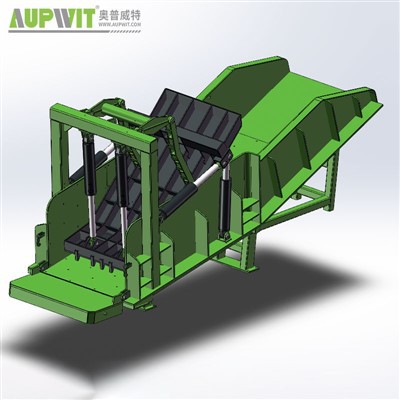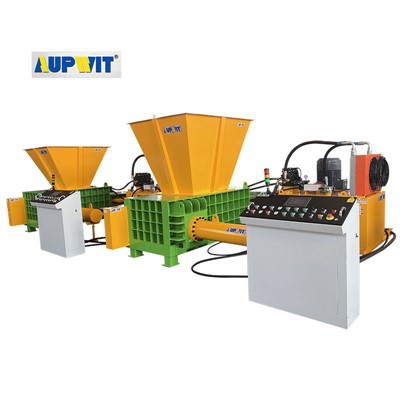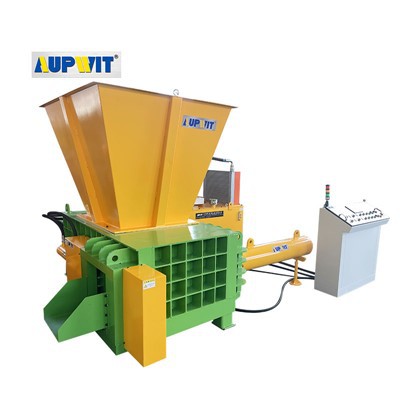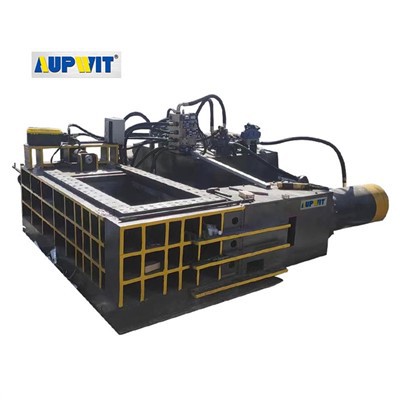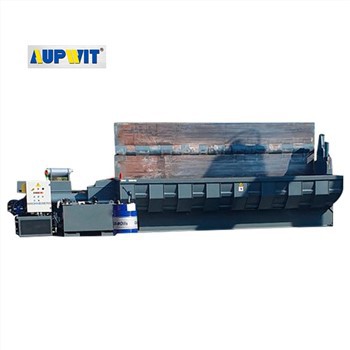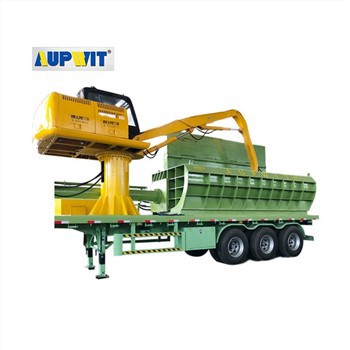Introduction
Scrap metal balers are critical machinery in the waste management and recycling industry. They provide an efficient and cost-effective method of processing scrap metal, transforming it into compact, manageable bales for easier transportation, storage, and resale. These machines play an essential role in improving the efficiency of metal recycling and reducing the environmental impact of metal waste. This article will delve into the features, operation, applications, and benefits of scrap metal balers.
What is a Scrap Metal Baler?
A scrap metal baler is a machine used to compress scrap metal, including aluminum, steel, copper, and other metals, into dense, compact bales. These bales are then easier to handle, store, and transport, facilitating the recycling process. Scrap metal balers are particularly useful in environments where large volumes of metal waste need to be processed quickly and efficiently, such as scrap yards, industrial plants, and recycling centers.
Key Features of Scrap Metal Balers
-
Hydraulic Compression System: Scrap metal balers utilize powerful hydraulic systems to exert immense pressure on the metal scrap, compressing it into compact bales. This system ensures high-density baling, making the scrap easier to handle and transport.
-
Automatic and Manual Options: Scrap metal balers come in both manual and automatic variants. Automatic balers are typically equipped with advanced features such as automatic feeding, cycling, and ejection, reducing the need for human intervention and increasing operational efficiency.
-
Heavy-duty Construction: These balers are built to withstand the stresses of compressing metal, with reinforced frames and durable components designed to handle tough, abrasive materials. The heavy-duty construction ensures a long lifespan and minimal maintenance.
-
Versatile Bale Sizes: Scrap metal balers are available in various sizes and configurations, allowing operators to choose a machine that best suits their needs. Some balers produce rectangular bales, while others can create cylindrical or custom-shaped bales depending on the end-use requirements.
-
Energy Efficiency: Modern scrap metal balers are designed with energy efficiency in mind, incorporating features like energy-saving hydraulic systems, automatic shut-off controls, and low-energy standby modes to reduce operational costs.
How Scrap Metal Balers Work
The basic operation of a scrap metal baler follows these steps:
-
Loading: Scrap metal is loaded into the feeding hopper, either manually or through an automatic conveyor system. Depending on the baler model, the scrap may be shredded or left in larger pieces before being processed.
-
Compression: Once the metal scrap enters the baling chamber, the hydraulic system is activated. A ram or plunger compresses the metal, applying significant force to reduce its volume. This process ensures that the metal is compacted into a tight, dense bale.
-
Bale Formation: After compression, the metal forms into a compact shape, usually a rectangular or cylindrical bale, depending on the machine's configuration. The bale is then held in place by hydraulic pressure.
-
Ejection: Once the bale is formed, it is automatically or manually ejected from the chamber using hydraulic force. The next cycle begins immediately, allowing for continuous production.
-
Strapping or Binding: In some models, the bales are automatically strapped or bound to hold them together, making them more secure during transportation and storage.
Applications of Scrap Metal Balers
-
Scrap Yards and Recycling Centers: Scrap metal balers are commonly used in scrap yards to process large amounts of metal waste into compact bales. These bales are then transported to recycling facilities where they are melted down and reused in manufacturing processes.
-
Automotive Industry: In the automotive sector, scrap metal balers are used to process metal parts, such as body panels, engine components, and other discarded materials, from vehicles at the end of their life cycle.
-
Industrial Manufacturing: Industries like steel mills, aluminum plants, and copper production facilities generate a significant amount of metal scrap, including shavings, turnings, and offcuts. Scrap metal balers are essential for efficiently handling and processing this waste.
-
Construction and Demolition: Construction and demolition projects often produce scrap metal such as steel beams, rebar, and other metal debris. Scrap metal balers help compact these materials, making them easier to recycle or transport to waste management facilities.
-
Electronic Waste Recycling: Scrap metal balers are also used in e-waste recycling, where electronics such as computers, televisions, and appliances are dismantled, and the metal components are baled for recycling.
Benefits of Scrap Metal Balers
-
Improved Efficiency: Scrap metal balers significantly increase processing speed by automating the compression and ejection of metal scrap. This improves the overall efficiency of recycling operations, reducing labor costs and downtime.
-
Space Optimization: By compressing large volumes of metal scrap into compact bales, balers help save valuable storage space, which is particularly important in high-volume recycling centers and scrap yards.
-
Cost Savings: Compacting metal scrap reduces transportation costs, as more material can be transported per load. Additionally, the reduction in scrap volume helps optimize storage space, lowering long-term operational costs.
-
Increased Recycling Rates: By improving the efficiency of the scrap metal recycling process, balers encourage higher recycling rates, contributing to a more sustainable and circular economy. Metals that would otherwise be wasted can be reused, reducing the need for virgin materials.
-
Safety and Reduced Labor: Scrap metal balers automate the heavy lifting and processing of metal waste, reducing the physical strain on workers and minimizing the risk of injury. Additionally, automatic models reduce the need for manual supervision, further improving safety in the workplace.
Conclusion
Scrap metal balers are invaluable tools for recycling centers, scrap yards, and industries that generate metal waste. With their ability to efficiently compact metal scrap into manageable bales, these machines contribute to reducing environmental impact, lowering operational costs, and improving the overall efficiency of the recycling process. As the demand for recycled materials grows and environmental regulations become stricter, the importance of scrap metal balers in the global recycling ecosystem will continue to increase, making them essential equipment for a more sustainable future.


